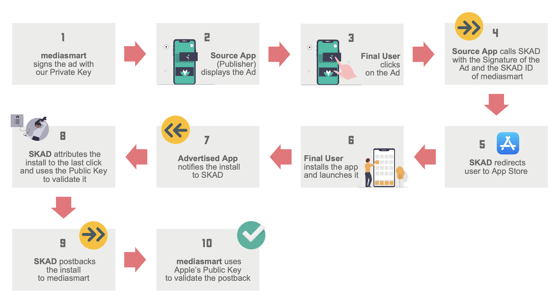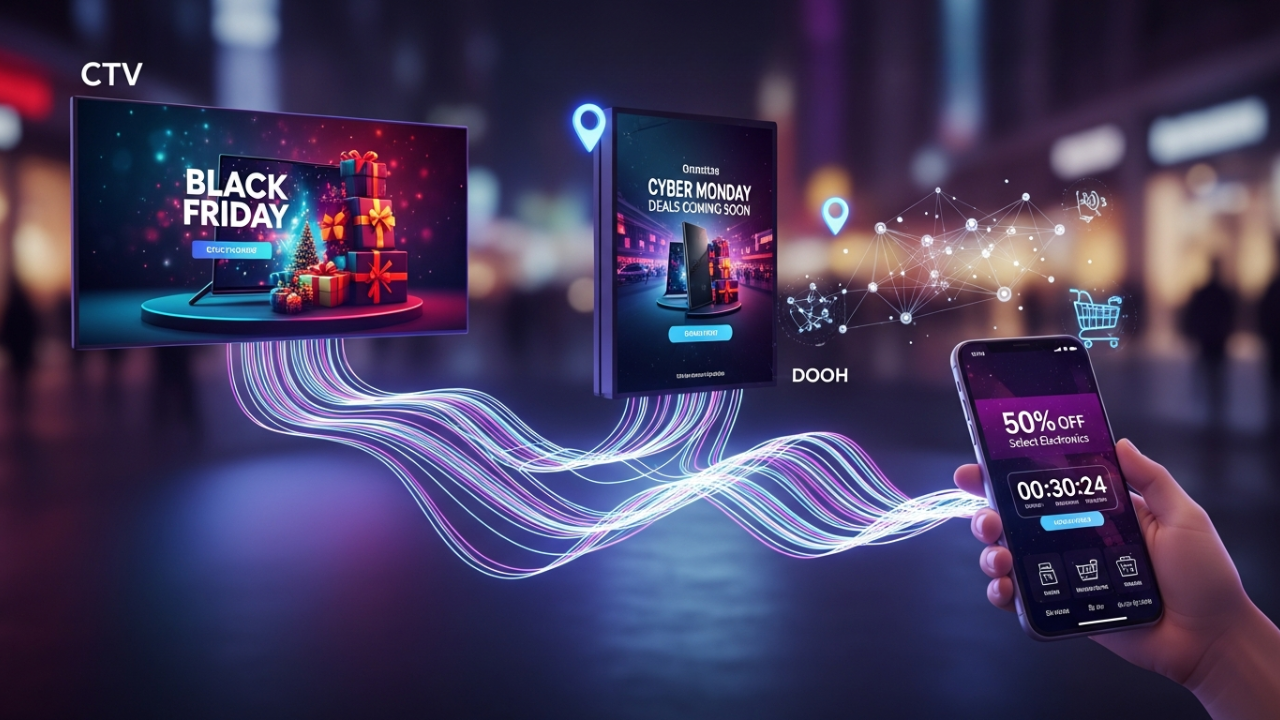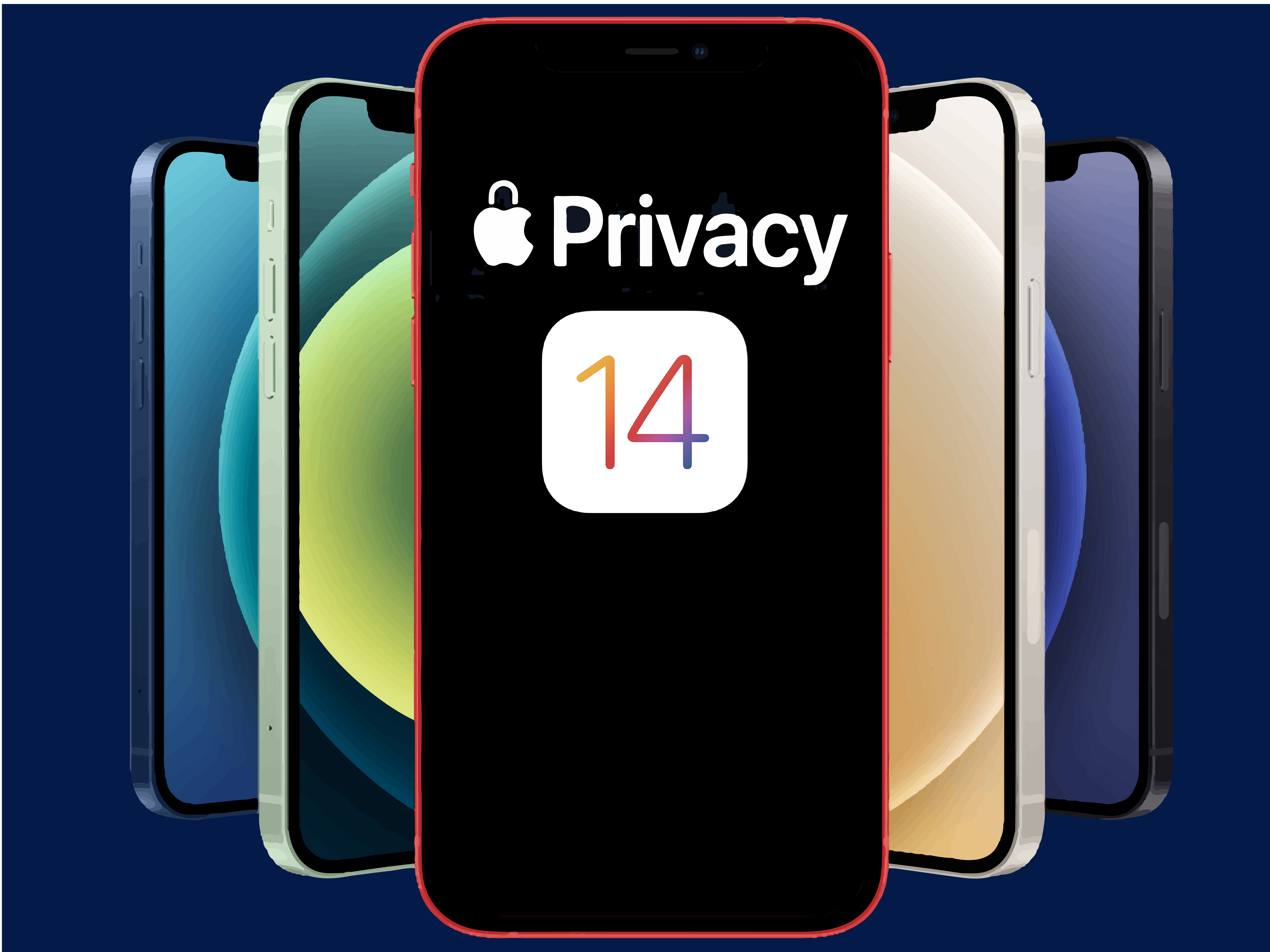Blog
Announcements, analysis and opinions on industry trends around the mobile programmatic world.

Subscribe now, and receive the latest programmatic content directly on your inbox!
Thank you for subscribing to our newsletter
As the privacy Limited Ad Tracking becomes the default with iOS 14.5 and SKAdNetwork starts tracking conversions; app advertisers and other demand side players running app marketing campaigns wonder: do I need my own SKAdNetwork ID?
If you don't know what we are talking about, we encourage you to have a look at our the Advantages of using SKAdNetwork article.
Now, for those looking for an answer, long story short: in the programmatic world, unless you are a DSP we recommend you not to worry about getting your own SKAdNetwork ID and rely on a) the SDK of the MMP used in the app and b) the SKAdNetwork ID of your DSP. Incidentally, if you want to run tests for your app or apps of your clients, mediasmart is ready so, please, get in touch with us!
Where does our assessment come from?
If you wanted conversion information from SKAdNetwork to go directly to you from Apple, you would need your own SKAdNetwork ID. But for the end-to-end attribution process to work when buying media programmatically through a DSP, we recommend you use the DSP's SKAdNetwork ID, even if that means you'd get the post-backs from Apple via your DSP. Why? There are multiple reasons involving technical complexity, time to market and security. Let us analyze them step-by-step.
First of all, if you want to use your own SKAdNetwork ID when buying media through a DSP, you would need to ensure all publishers connected to that DSP know your SKAdNetwork ID, otherwise, any ad running on those publishers will not generate post-backs for conversions. And that is easier said that done. This is what would need to happen:
1) You would share the SKAdNetwork ID with the DSP.
2) The DSP would need to send the SKAdNetwork ID to all the SSPs they work with.
3) The SSPs would need to integrate it in their SDK.
4) SSPs would need to release a new version of the SDK (or wait until one needs to be released).
5) Publishers would need to install the SSPs SDK on their apps.
Up until this point, only this process could take months.
Second of all, as part of the new tracking process, an Ad Signature for secure information processing is needed; as explained on the graphic below.

If you want to use your SKAdNetwork ID, you would need to send to your DSP the Private Keys they need to generate the signature with your SKAdNetwork ID on the fly when buying the media, which represents a major security risk: your DSP is actually pretending to be you... and could potentially do so at their convenience.
Third of all, if you wanted your DSP to use conversion information to optimize campaigns, them you would need to find a way to send the post-backs you receive to the DSP or to your MMP, which is not trivial from a technical perspective.
To avoid these lengthy and arduous steps, as well as the security risks involved, and make the most our of the media buying technology, we recommend advertisers (or those buying on their behalf) to buy programmatically using the SKAdNetwork ID of the DSP doing the media buying, and have the DSP post-back conversions either to the MMP (if one is used) or to the advertiser directly.
Then, you would only need to ensure that the app being marketed is updated to interact with SKAdNetwork (notifying first launches and -optionally- post-install events) and to extract the IDFA. If the app uses an MMP, they must have done this in their SDK.
Now, you may wonder: but if the DSP is receiving the post-backs instead of me, how do I ensure they're sending me exactly what they got from Apple and not making conversions up? Well, you can always ask your DSP for their public key from Apple and use it to validate all of the post-backs you receive indirectly. This way you can identify any post-backs that do not come directly from Apple, as they would not be validated.
*Disclaimer: Apple has released the beta iOS14.5. The official release date hasn't been shared, but it will most likely be this Spring 2021.


